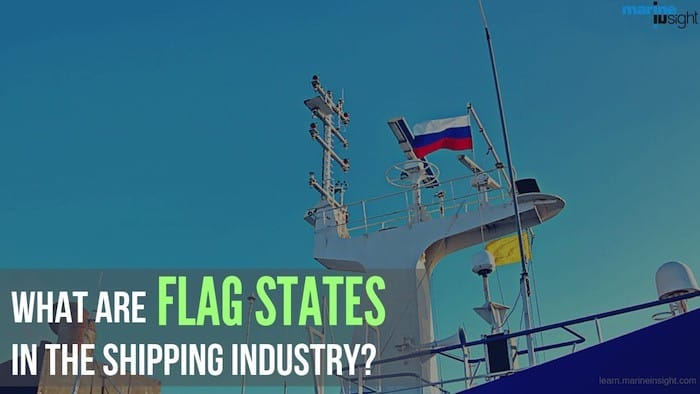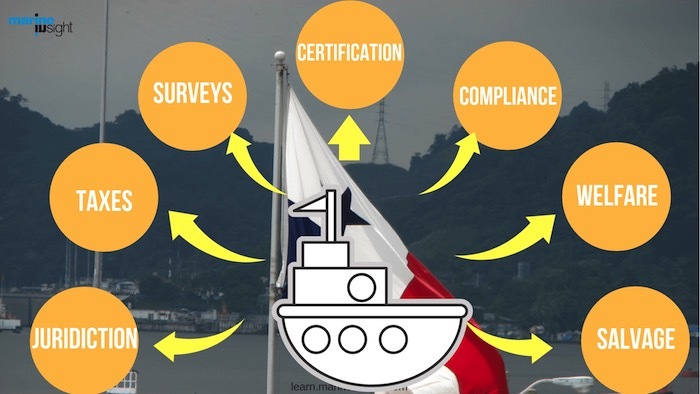What are Flag States in the Shipping Industry And What’s Their Role?
Every merchant ship needs to be registered to a state of its choice. The ship is then bound to carry the flag of that state and also follow the rules and regulations enforced by the same. The ship’s flag is an important factor when the court makes the decision on the judging.
The ship will follow the regulation of the flag state nation’s maritime law in the open sea and it will also avail different protections and preferential treatments as tax, certification, and security etc as per the flag state benefits.
Ship registration plays an important role in many aspects such as vessel purchases, newbuilding deliveries, financing, vessel leasing, and different priorities of owners and mortgagees.
Why Flag State?
The term Flag State came to existence because of the usage of flags as the symbol of the nationality or tribe the ships belong to from the early days. The flag has come to be an officially sanctioned and very powerful symbol of the State and is the visible evidence of the nationality conferred by the State upon ships registered under its national law. The ship’s flag displays the nationality of the ship, under whose laws the ship is plying in the international waters.
Related Read: Understanding Nautical Flag Etiquettes
However, it is to note that not all vessels are registered to their ship owners’ country of origin. The country under whose registration such vessels operate is referred to as a flag state whereas the practice of registering the ship to a state different than that of the ship’s owner is known as the flag of convenience (FOC).
The vessel in consideration thus has to comply with all the maritime rules, regulations and stipulations laid out by the flag state in accordance with the international maritime rules and stipulations.
For a country to be included in the list of flag states, it has to have the necessary maritime infrastructure – both financial and technical and should, most importantly, adhere to all the norms and regulations established by the International Maritime Organisations (IMO).
Additionally, in case a ship is not complying with the required norms imposed by authority, then the country registered as a flag state needs to be adequately equipped to impose strictest of penalties on the offending vessel and party.
Although there are several benefits to have a separate flag state and register a vessel to its port of registry, there are several significations of the same as well.
- A country offering the most optimum returns for the owner of a vessel is chosen as the flag state
- The country which serves as a flag state is deemed to be the superior-most in the authorisation hierarchy
- As such the flag state for ships is entitled and required to carry out regular monitoring and inspections to ensure that the vessel is following its maritime guidelines appropriately
- These requirements to be fulfilled are mandatory and bear clear outlining in several international maritime conventions like the SOLAS and UNCLOS
- A vessel that flies the flag of a state, not complying with the monitoring and inspection requirements is deemed to be of an inferior standard
This could complicate the matter for an owner, even if the vessel by itself isn’t inferior.
Related Read: A List of Inspections And Surveys Deck Officers On Ships Should Be Aware Of
In order to ensure that the flag state for ships itself possess the necessary resources to carry out the policy of safe and secure shipping, the IMO has come up with a unique system. The system involves the flag states themselves to ascertain their levels of competency and thereafter present a detailed report about the same to the organisation. While this promises to be an interesting method, the only loophole is that there is no base level against which all flag states can measure themselves. However, port state control (PSC) inspections and other methods are used to improve the standard of the ships to a great extent.
However, it is to note that lately there have been problems related to a few flags of convenience (FOC) which has sacrificed seafarers’ safety and security. It is therefore important that seafarers know about problems related to such flags of convenience
Related Read: 7 Dangers of Flags of Convenience (FOC) to Seafarers
- The shipowner can apply for the flag state even before the keel laying of the ship depending upon the benefits the owner will be getting for doing the business in the international water with the flag
Role of Flag State:
- One of the most important roles of the flag states is to arbitrate different types of maritime conflicts such as accident, salvage etc. under the principle law of ships’ nationality
- The ship is always on the move and there are high chances of damages to its cargo or structure at open seas or within the jurisdiction of another country. It is very difficult and impractical to judge the conflict by any country’s authority. In such cases, the flag state judgment is taken and based on that, the course of action is decided. However, if the incidence involves damage to the structure of another ship or land/ post based property or pollution, the local authority will be involved and have the upper hand on the legal decisions
- When a situation of salvage occurs, it has to be undertaken as per of the contract. If the contract does not explain the salvage condition, it will be performed as per the maritime law of the flag state nation

- The flag state is responsible for overseeing the International Safety Management Code and it had the authority to issue or withdraw the ship’s Safety Management Certificate (SMC)
Related Read: What ISM Certificates You Require to Start a Shipping Company?
- The basic operational standards for a ship required by IMO and ILO such as competence of the crew, minimum manning, ship and port security, employment standards, onboard working conditions, movement of ships between flags, repatriation of the crew, different audits etc. are also the responsibility of the flag state, by working with ship owners
- If the port or regulatory authority found out that the ship is not fit for sailing at high seas, the crew will work as per the flag state instructions specified in SMS along with adequate monitoring and verification procedures to ensure the issue is resolved as per the requirement. Usually, the flag state will allow such tasks to one of the selected classification societies
- Flag state is responsible to cooperate with other authorities or flag states to carry out an investigation in case of accidents in which causality or pollution is involved
- As per UNCLOS, the flag state must ensure its ships are in compliance with all anti-pollution requirements and marine pollution laws, i.e. to adopt laws and regulations aiming at prevention, reduction, and control of pollution
Related Read: How to Avoid Oil Pollution From Ships?
Flag state delegates most of its responsibilities to classification societies which include regulation implementation and technical duties. As these societies are private organizations and fighting for the market share, they are often criticized for lowering their standards to attract clients and keeping up with the competition.
Changing the Flag State:
The change of the flag state can happen if the ship owner or manager decides to shift to another state or when a ship is sold to another party, which has a different flag state preference.
For changing the flag state, various lists of documents including electronic plans, details of seafarer documents, navigation equipment, machinery etc. are submitted to the approaching flag state along with the change of flag application.
Some flag state provides an option to apply for the subsidies for the approaching flag state before the actual change of flag
The official entry into the shipping register of the new flag state for sea-going ships will happen only after the ship has been deleted from the previous flag state register.
At the day of flagging-in (with the flag of the new state), the ship is first surveyed by the Safety Division of the flag state or a by a selected recognized classification society working on behalf of the new flag state. The surveyor acting on behalf of the flag state or a class surveyor will issue a certificate with a period of validity of 3 to 5 or more months, depending upon the flag state policy. However, the certificates are valid immediately.
After the change of flag, the ship starts operating under interim certificates for a while, and during this period, the surveyors representing the flag state administration verifies the condition and deficiencies of the ship. After the complete satisfaction of the flag state, the final ship safety certificates are issued by the administration and sent to the shipping company.
Disclaimer: The authors’ views expressed in this article do not necessarily reflect the views of Marine Insight. Data and charts, if used, in the article have been sourced from available information and have not been authenticated by any statutory authority. The author and Marine Insight do not claim it to be accurate nor accept any responsibility for the same. The views constitute only the opinions and do not constitute any guidelines or recommendation on any course of action to be followed by the reader.
The article or images cannot be reproduced, copied, shared or used in any form without the permission of the author and Marine Insight.
Do you have info to share with us ? Suggest a correction
Latest Maritime law Articles You Would Like:
Latest News
- What are Logistics Risks?
- How Port and Terminal Operators Can Control Emissions?
- Minimum Quantity Commitment (MQC) and Liquidated Damages in Container Shipping: Concept and Relevance
- MARPOL (The International Convention for Prevention of Marine Pollution For Ships): The Ultimate Guide
- The Ultimate Shipping Container Dimensions Guide
- A Comprehensive Overview of IMDG Code for Shipping Dangerous Goods
Subscribe To Our Newsletters
By subscribing, you agree to our Privacy Policy and may receive occasional deal communications; you can unsubscribe anytime.



















I a student with a bachelors degree seeking for admission in the national university of singapore an i love maritime affairs